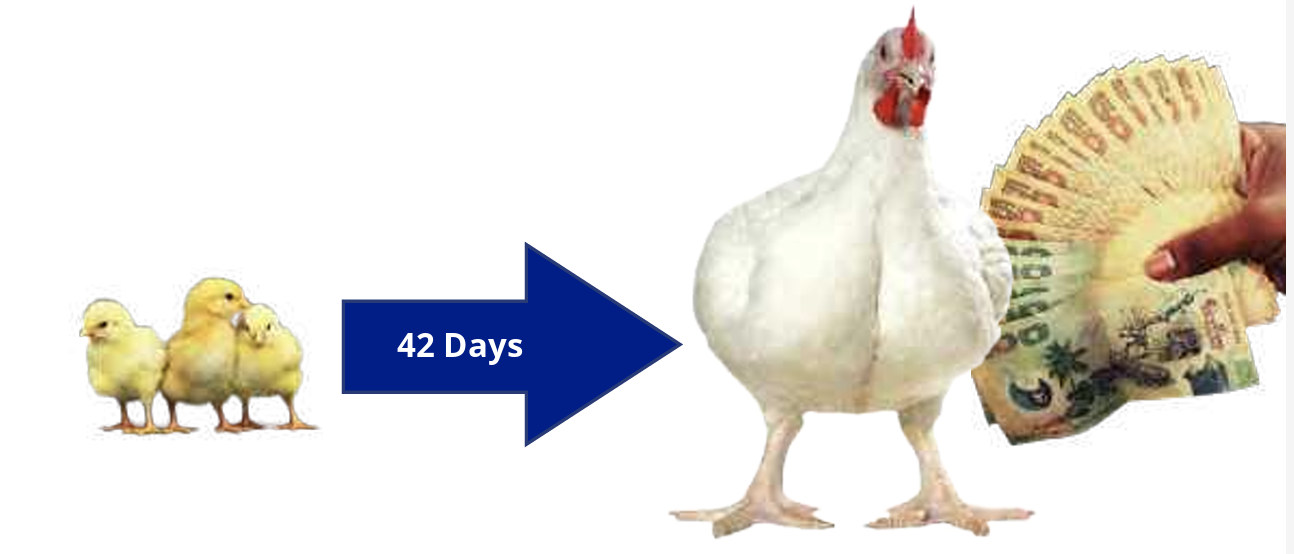1.1 Why Farm Broilers?
Smallholder poultry farming is one of the fastest growing SME sectors in PNG. NARI estimates that approximately 1 in 4 PNG households are engaged in some form of poultry production. Furthermore, stringent biosecurity measures have ensured the country remains free of the world’s worst avian diseases. PNG’s relative disease-free and favourable climate are the cornerstones of the poultry industry’s success. As a healthy and cheap source of protein, demand for chicken meat continues to grow steadily. Consumer preferences for poultry will continue to be driven by rising incomes and population growth. Furthermore, well managed birds can be ready for sale at 6 weeks of age. This short production cycle can generate quick returns for broiler farmers.
1.2 Broiler Production Process
1.3 Housing and Equipment
Housing
Chicken sheds should be carefully planned to provide comfort and ideal conditions for optimal growth. The following factors should be considered when building a chicken shed:
1. Reflective roofing. Reduce impact of sun’s heat.
2. Open sides (Chicken wire). Maximise ventilation and fresh air flow.
3. East to West facing. No direct sunlight inside shed.
4. Litter is soft and dry.
5. Stocking density recommendation: 15kg/m2 hot climates and 20kg/m2 cold climates)
6. Biosecurity: No contact with other people, animals or birds.
STRONG BIOSECURITY = STRONG DISEASE CONTROL
Equipment
Equipment should always be clean and well maintained for optimal growth. The following equipment factors should be considered: 1. Feeders: Plan for 50 chickens per feeder. 2. Water Drinker: Plan for 50 chickens per drinker. If stocking rate increases more feeders and drinkers should be provided.
1.4 Broiler Farming Key Objectives
The overall objective in broiler farming is to grow chickens as cheaply and efficiently as possible to increase profits. The following performance indicators should be reviewed to assess performance of each flock.
• Low Mortality i.e. Only few chickens die during growing period.
• Low FCR (Feed Conversion Rate). The amount of feed consumed per kilo of meat. The lower the FCR, the more efficient chickens are at converting feed into meat.
FCR = Total Feed Consumed DIVIDED BY Total Live Weight
E.g. 50 chicken sample has total weight of 110kg (50 x 2.2kg each).
Total feed consumption was 160kg (25kg Starter + 50kg Grower + 95kg Finisher)
1.5 Record Keeping
Record keeping is important as it monitors performance. Accurate record keeping will allow you to clearly see if management changes have made a difference to overall flock performance.






